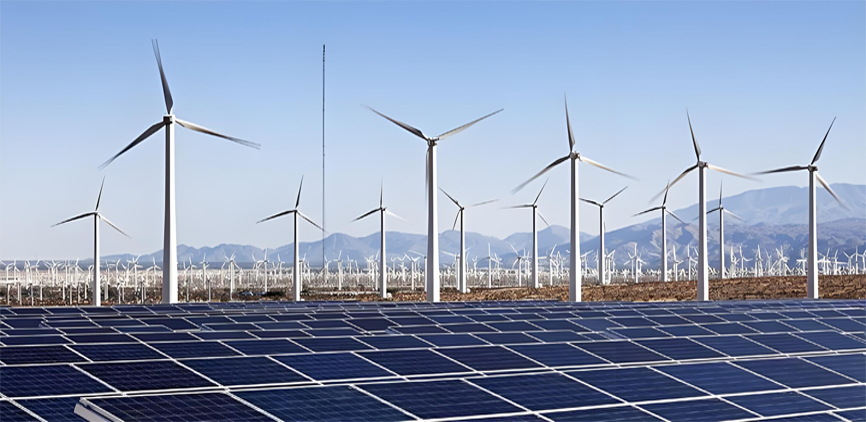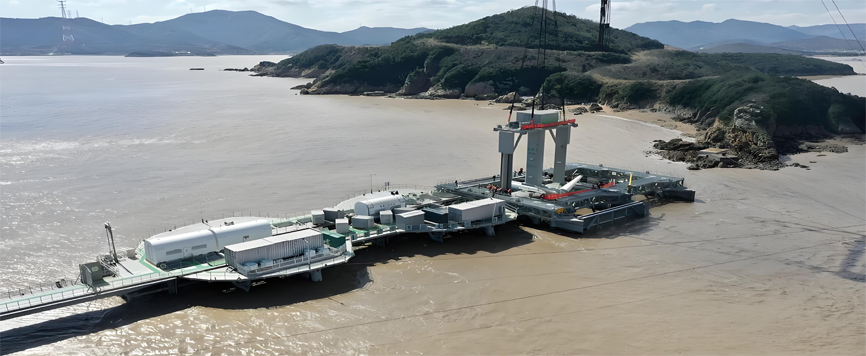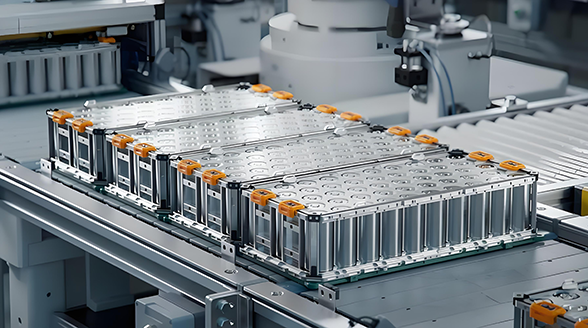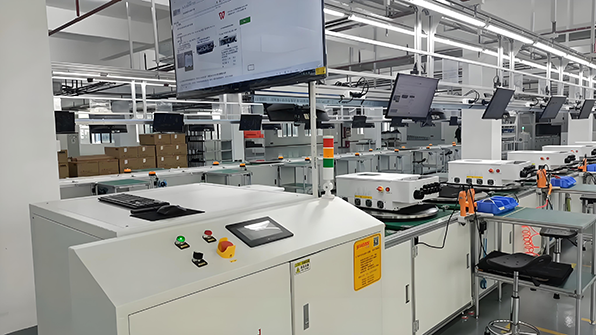导航栏
"QAIT" Company has been deeply engaged in the renewable energy sector, focusing on the development and application of clean energy sources such as solar energy, wind energy, hydropower, biomass energy, and geothermal energy. It provides full-chain products and technical services ranging from core equipment to system solutions. Its product portfolio covers energy production equipment including solar panels, wind turbine generators, hydropower equipment, biomass energy conversion devices, geothermal development systems, as well as supporting facilities like energy storage batteries and inverters, enabling full-process coverage from energy collection and conversion to storage and grid connection. In terms of technical services, the company relies on its professional team to offer one-stop services including system integration design, engineering construction, equipment operation and maintenance, and technical consultation for energy projects, committed to creating efficient and stable renewable energy solutions for global clients and promoting low-carbon energy transition and sustainable development.
1.Renewable Energy Overview:
"Renewable energy", also known as green energy, refers to energy sources that come from nature, can be recycled, and will not be exhausted. These include solar energy, wind energy, hydropower, biomass energy, geothermal energy, and ocean energy, among others. Its core characteristics are environmental friendliness and sustainable utilization, playing a crucial role in reducing dependence on fossil fuels, lowering carbon emissions, and addressing climate change.
2.The Main Types of Renewable Energy:
(1)Solar Energy
Principle: The sun continuously undergoes nuclear fusion reactions in its interior, constantly radiating energy in the form of light and heat to the surroundings. The main utilization methods of solar energy include solar photovoltaic power generation and solar thermal utilization. The former converts sunlight into electrical energy through the photovoltaic effect; the latter uses solar collectors to convert solar radiation energy into thermal energy for hot water supply, heating, etc.
Features: It is rich in resources, inexhaustible, clean and pollution-free, and can be obtained in most parts of the earth. However, solar energy has a relatively low energy density, and its supply is affected by factors such as day and night, seasons, and weather, showing intermittency and instability.

Solar Energy
(2)Wind Energy
Principle: The uneven heating of the Earth's surface leads to atmospheric pressure differences, causing air to flow and form wind. Wind power generation uses wind to drive the rotation of windmill blades, which are then accelerated by a speed increaser to drive a generator to produce electricity.
Features: Wind energy is a renewable clean energy with continuously decreasing costs and relatively mature technology. However, the distribution of wind energy is regional, and it has high application value in areas with rich wind resources such as coasts, plateaus, and grasslands. Nevertheless, it also has problems such as low energy density and unstable wind speed, which may require the configuration of energy storage equipment or complementarity with other energy sources.

Wind Energy
(3)Hydropower
Principle: Hydropower refers to energy resources such as the kinetic energy, potential energy, and pressure energy of water bodies, including river hydropower, tidal energy, wave energy, ocean current energy, etc. Common hydropower generation utilizes the water level difference in water bodies such as rivers and lakes to convert the gravitational potential energy of water into the mechanical energy of a water turbine, which in turn drives a generator to produce electricity. Tidal energy, wave energy, and ocean current energy, on the other hand, use the kinetic energy and potential energy of ocean surface waves for power generation.
Features: It has high power generation efficiency, stable and reliable operation, and does not produce pollutants during the power generation process. It is one of the most technologically mature renewable energy sources. However, the construction of hydropower stations may have certain impacts on the ecological environment, such as changing river ecosystems and affecting fish migration. It also requires specific geographical conditions, has a long construction period, and involves large initial investments.

Hydropower
(4)Biomass Energy
Principle: Biomass energy is a form of energy that stores solar energy in the form of chemical energy through biological carriers, directly or indirectly derived from the photosynthesis of plants. Through technologies such as biological fermentation, gasification, and pyrolysis, biomass can be converted into fuels such as biogas, biodiesel, and bioethanol, which are used for power generation, heating, or as transportation fuels.
Features: Abundant in resources, renewable, and environmentally friendly, biomass energy can reduce dependence on fossil fuels. Meanwhile, the utilization of biomass energy can also promote the recycling of waste and reduce environmental pollution. However, the collection and transportation costs of biomass energy are relatively high, and its energy density is relatively low. Large-scale development may compete for land resources with agriculture, forestry, and other sectors.

Biomass Energy
(5)Geothermal Energy
Principle: The decay of radioactive substances inside the Earth generates heat, which raises the temperature of rocks and fluids in the crust through heat conduction and other means, forming geothermal energy. Geothermal energy is mainly utilized in two ways: geothermal power generation and direct geothermal application, such as geothermal heating, hot spring bathing, and geothermal agriculture.
Features: Geothermal energy is a stable and renewable energy source, unaffected by weather and seasons, and produces almost no greenhouse gas emissions during use. However, the distribution of geothermal energy is limited by geological conditions, with high development costs and relatively high technical requirements.

Geothermal Energy
(6)Battery
Principle: A battery is essentially a device that realizes the mutual conversion between electrical energy and chemical energy through redox reactions. During charging, an external power source drives ions to migrate between the positive and negative electrodes, and electrons are transferred through the external circuit, converting electrical energy into chemical energy for storage. During discharging, ions migrate in the reverse direction, and electrons flow to the load, releasing chemical energy as electrical energy for use, thus achieving energy storage and release.
Features: Different types of batteries have their respective advantages and disadvantages.
✔Lithium-ion batteries have high energy density and fast response, but they come with higher costs and the risk of thermal runaway.
✔Lead-acid batteries have low costs and mature technology, but they have low energy density and short cycle life.
✔Flow batteries have high safety and extremely long lifespan, making them suitable for large-scale energy storage, but they require a large initial investment.
✔Sodium-ion batteries are rich in resources and have excellent low-temperature performance, which can supplement the low-end market.
✔Hydrogen fuel cells have extremely high energy density and zero emissions, making them suitable for long-term energy storage. However, challenges in cost, storage, and transportation urgently need to be addressed.

Battery
(7)Inverter
Principle: An inverter is a core device for realizing the conversion of electrical energy forms. Its principle is to use semiconductor switching devices (such as IGBTs, MOSFETs, etc.) to periodically turn on and off, cutting direct current (DC) into high-frequency pulse waveforms. Filter circuits (inductors, capacitors) then integrate the pulse waves into alternating current (AC) close to a sine wave. This process precisely controls the switching frequency and duty cycle through technologies like pulse width modulation (PWM), thereby adjusting the voltage, frequency, and phase of the output AC to adapt to the power requirements of different loads (such as home appliances, power grids, or motors). In simple terms, an inverter acts as a "current direction converter," enabling DC power to drive diverse devices like AC power. It is indispensable in scenarios such as photovoltaic grid connection, energy storage systems, and electric vehicle charging.

Inverter
Features: Inverters have remarkable characteristics of high-efficiency conversion, intelligent regulation, and diversified applications.
✔High energy conversion efficiency: The efficiency of modern inverters generally reaches over 90%, and high-end products (such as photovoltaic grid-connected inverters) even exceed 98%, minimizing electrical energy loss.
✔Flexible and adjustable output characteristics: Different waveforms such as pure sine waves and modified sine waves can be generated according to requirements. Grid-connected inverters need to strictly match the frequency (50/60Hz) and phase of the power grid, while variable-frequency inverters can precisely adjust the frequency of motor drive to achieve energy-saving control.
✔Integrated multiple protections and intelligent control: Equipped with built-in protection functions such as overvoltage, undervoltage, overload, short circuit, and overheating to ensure the safe operation of the system. Grid-connected inverters also need to have islanding protection (automatically disconnecting during grid failures) and reactive power compensation capabilities. Some high-end products support digital monitoring, allowing remote parameter adjustment through the Internet of Things.
✔Wide range of application scenarios: In the new energy sector, it is used to convert DC power from solar cells and batteries into AC power for household use or grid connection; in the transportation sector, it provides variable-frequency AC power for electric vehicle drive motors to achieve efficient speed regulation; in emergency power supplies (such as UPS), it converts DC power from batteries into stable AC power to ensure uninterrupted power supply for critical equipment.
✔Technical development trends: It is evolving towards high power density (smaller volume, larger power), wide input voltage range (adapting to voltage fluctuations in energy storage systems), and low harmonic pollution (meeting the access standards of clean energy for power grids) to adapt to the needs of large-scale application of renewable energy.